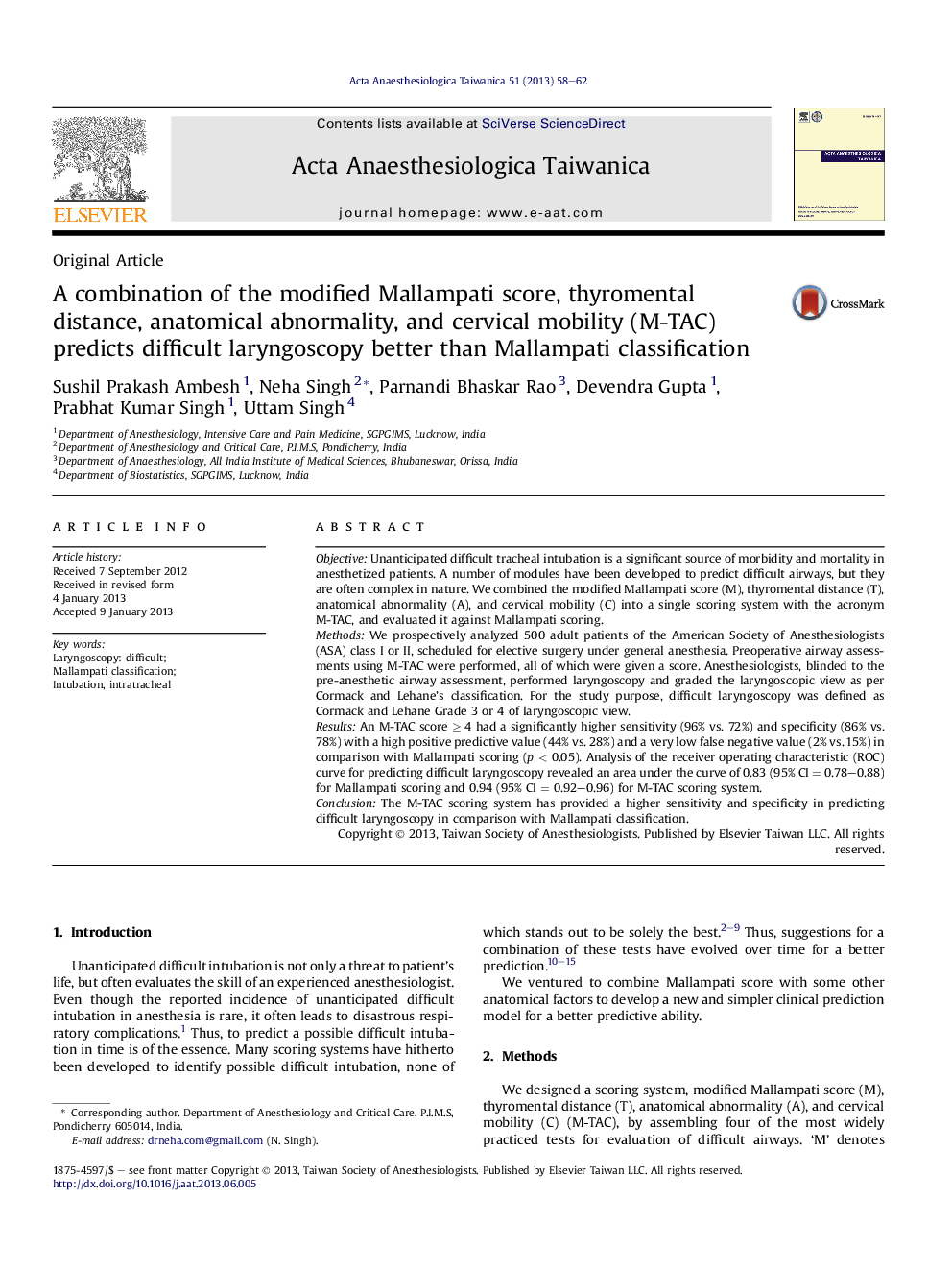| Article ID | Journal | Published Year | Pages | File Type |
|---|---|---|---|---|
| 2741451 | Acta Anaesthesiologica Taiwanica | 2013 | 5 Pages |
ObjectiveUnanticipated difficult tracheal intubation is a significant source of morbidity and mortality in anesthetized patients. A number of modules have been developed to predict difficult airways, but they are often complex in nature. We combined the modified Mallampati score (M), thyromental distance (T), anatomical abnormality (A), and cervical mobility (C) into a single scoring system with the acronym M-TAC, and evaluated it against Mallampati scoring.MethodsWe prospectively analyzed 500 adult patients of the American Society of Anesthesiologists (ASA) class I or II, scheduled for elective surgery under general anesthesia. Preoperative airway assessments using M-TAC were performed, all of which were given a score. Anesthesiologists, blinded to the pre-anesthetic airway assessment, performed laryngoscopy and graded the laryngoscopic view as per Cormack and Lehane's classification. For the study purpose, difficult laryngoscopy was defined as Cormack and Lehane Grade 3 or 4 of laryngoscopic view.ResultsAn M-TAC score ≥ 4 had a significantly higher sensitivity (96% vs. 72%) and specificity (86% vs. 78%) with a high positive predictive value (44% vs. 28%) and a very low false negative value (2% vs. 15%) in comparison with Mallampati scoring (p < 0.05). Analysis of the receiver operating characteristic (ROC) curve for predicting difficult laryngoscopy revealed an area under the curve of 0.83 (95% CI = 0.78–0.88) for Mallampati scoring and 0.94 (95% CI = 0.92–0.96) for M-TAC scoring system.ConclusionThe M-TAC scoring system has provided a higher sensitivity and specificity in predicting difficult laryngoscopy in comparison with Mallampati classification.
